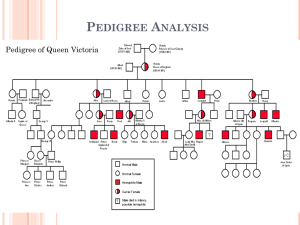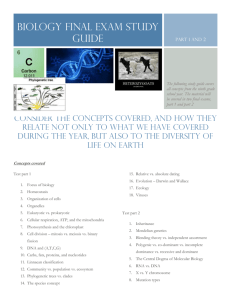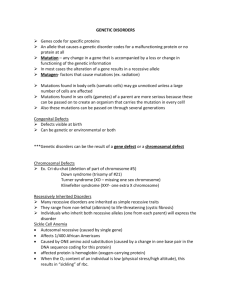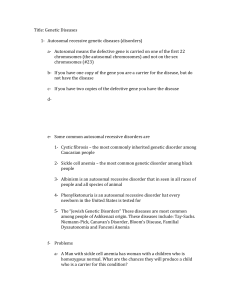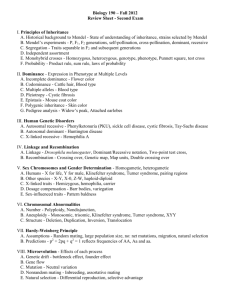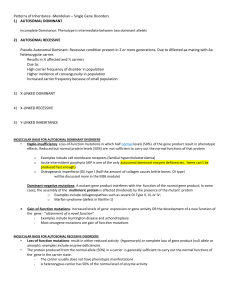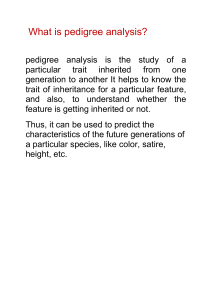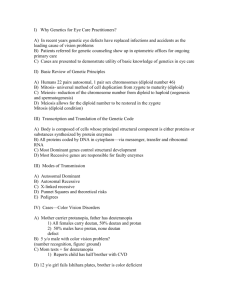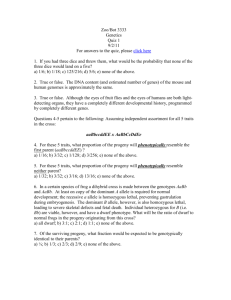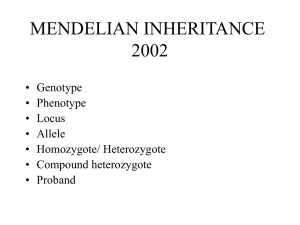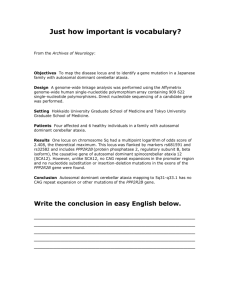Pedigrees
advertisement
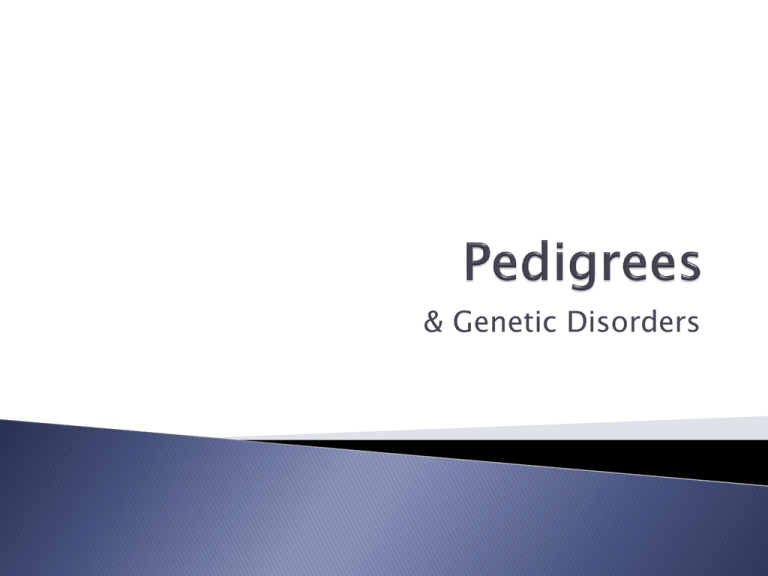
& Genetic Disorders Show the genetic history of a family “Genetic Family Tree“ Shows phenotypes one generation to the next Sometimes shows genotypes from one generation to the next; and sometimes you can figure out the genotype based on your knowledge of inheritance The Weasley Family Tree http://nd05.jxs.cz/776/087/f51a5cac71_86805403_o2.png FF= Free hanging ears Ff= Free hanging ears ff= Attached ears Ff ff Ff FF Ff Ff FF FF FF Ff Ff ff Ff each generation is represented using a Roman Numeral circles are females, squares are males a line connecting two shapes indicated a mating shaded in areas indicate an individual affected by the trait What do you see? Pedigrees tell the phenotypic/genotypic story: ◦ Who bred with who? (i.e. Any new traits introduced?) ◦ What was the relationship between relatives? (i.e. Third cousins once removed) ◦ What traits were passed on? (i.e. Hanging ears or Sickle Cell Anemia) So who would cares? A genetic disorder is a disease that is caused by an abnormality in an individual's DNA. Abnormalities can range from a small mutation in a single gene to the addition or subtraction of an entire chromosome or set of chromosomes. (The University of Utah, 2013) Common Misconception Alert! Genetic disorders are all inherited. – NOT TRUE! Level 1: Single Gene Disorders ◦ Mutation of a single gene cause protein to be altered or deleted Level 2: Chromosome Abnormalities ◦ Entire chromosomes or large segments are deleted, duplicated or altered Level 3: Multifactorial Disorders ◦ Mutations in multiple genes, often coupled with environmental factors (The University of Utah, 2013) (The University of Utah, 2013) Environmental Stress Diet Physical/Mental Abuse Drugs and Alcohol Exposure to Radiation, Pathogens, Toxins and Chemicals E.g. A person exposed to head injuries may be more likely to develop Alzheimer’s. Heredity Family Medical History ◦ 1st, 2nd and 3rd generation ◦ Skipped Generations ◦ Carriers Autosomal Dominant/ Recessive X-Linked Dominant/ Recessive Mitochondrial (paternal mtDNA) E.g. Huntington’s Disease is an Autosomal Dominant disease, and thus every generations will be affected by it. Down’s Syndrome: Trisomy 21 Klinefelter Syndrome: XXY Turner Syndrome: XO Fragile-X Syndrome: X-Linked Dominant ( FMR1) Duchenne Muscular Dystrophy: X-Linked Recessive (DMD gene) Huntington’s Disease: Autosomal Dominant (HTT gene) Tay Sachs: Autosomal Recessive (HEXA gene) Cystic Fibrosis: Autosomal Recessive (CFTR) Sickle Cell: Autosomal Recessive (HBB gene) Royal Family Pedigree (X-linked recessive) Autosomal Recessive Blood Disorder Some Symptoms: anemia, fever, chest pain, increased risk of infections, especially respiratory infections, death http://www.youtube.com/watch?v=9AHFHleY wdU Malaria: Sickle Cell ◦ Vector-borne disease, parasites are transmitted by mosquitoes through blood ◦ Symptoms include fever, chills, flu-like illness, may cause death ◦ In 2010 an estimated 216 million cases of malaria occurred worldwide and 655,000 people died, most (91%) in the African Region (CDC, 2010) ◦ Carriers have increased resistance against malaria ◦ 60% protection against overall mortality ◦ http://www.youtube.com/watch?v=1fN7rOwDyMQ&play next=1&list=PLD371690519F378F5&feature=results_m ain = Unaffected Individuals = Carriers of the disease = Affected by the Disease
